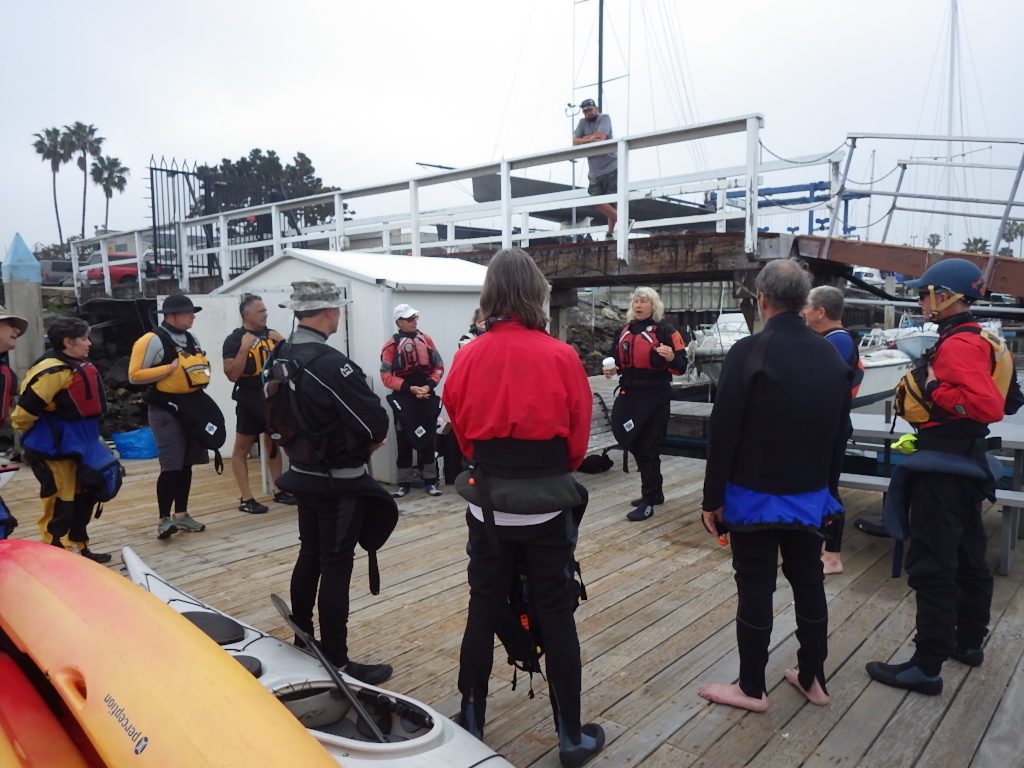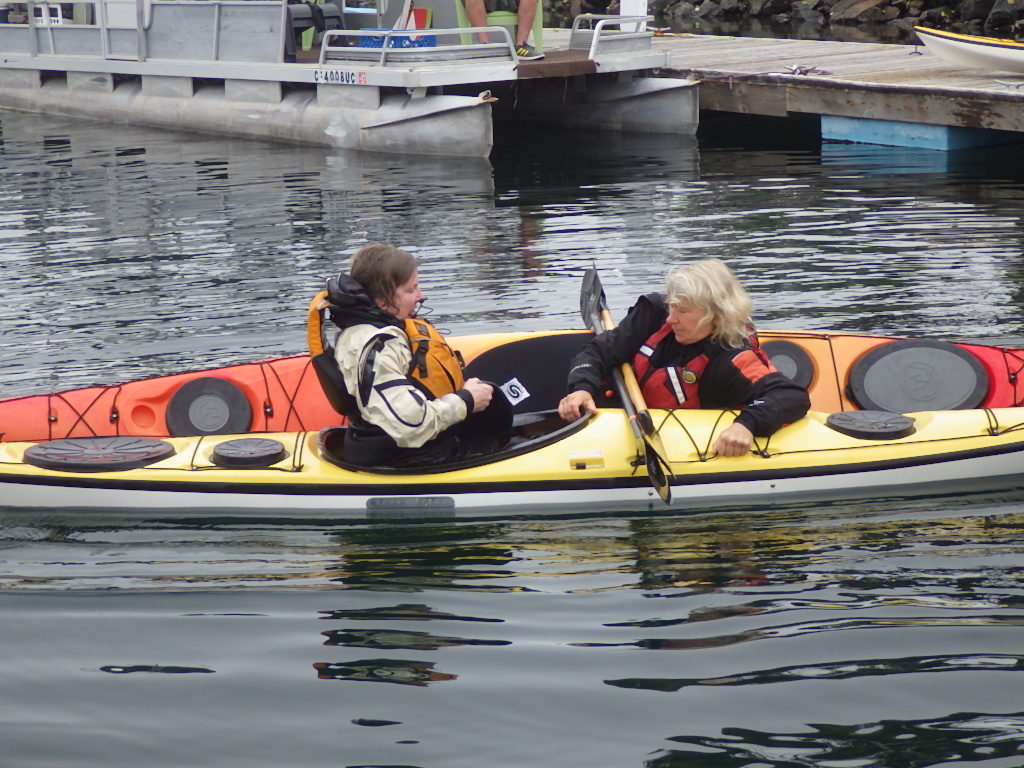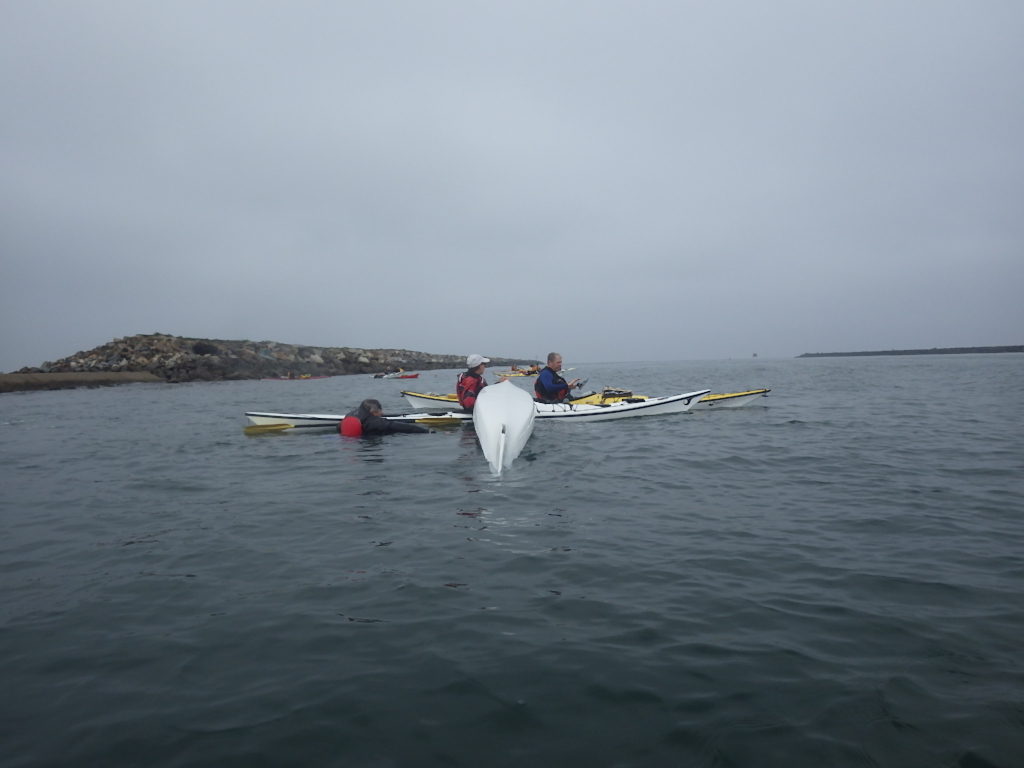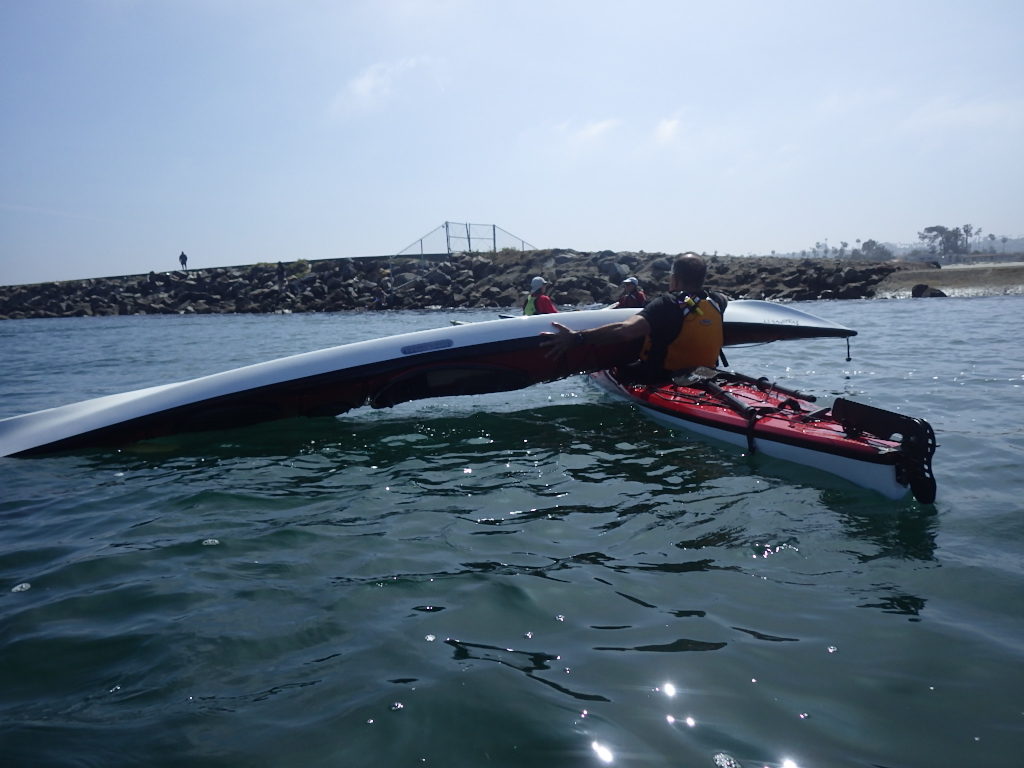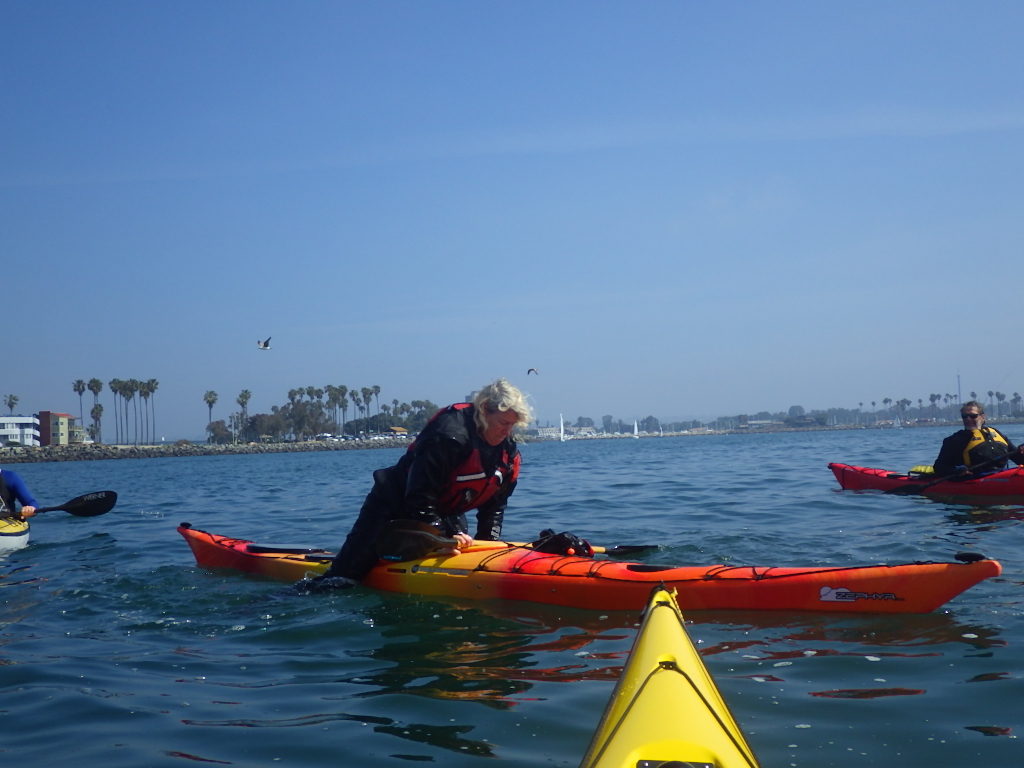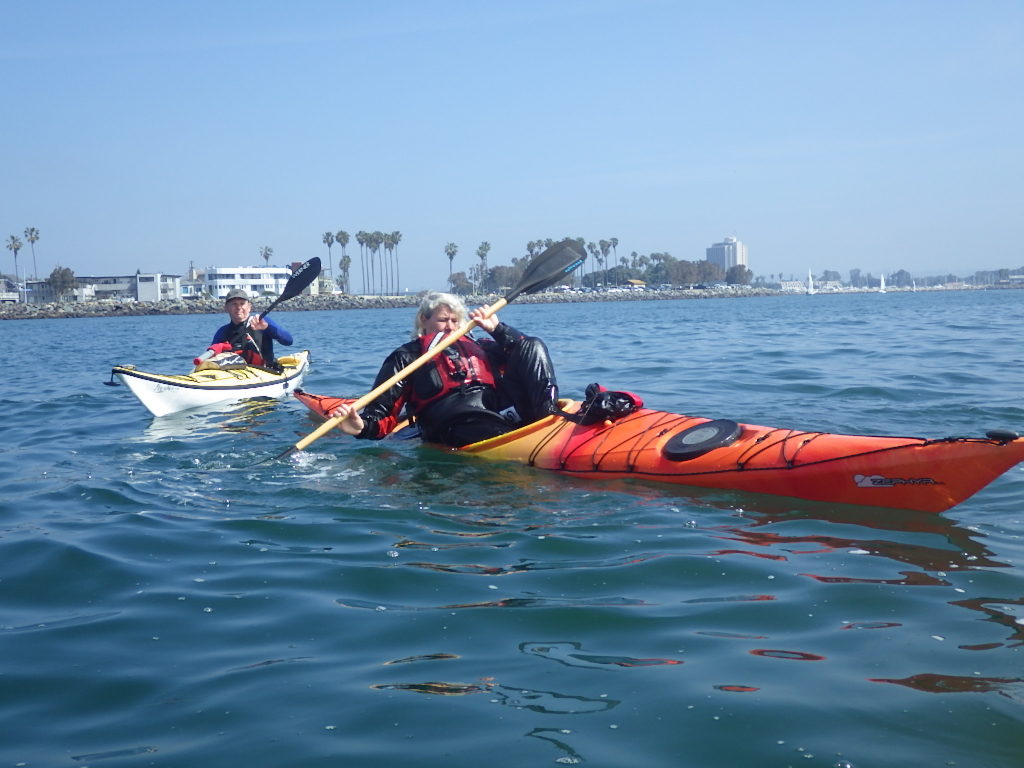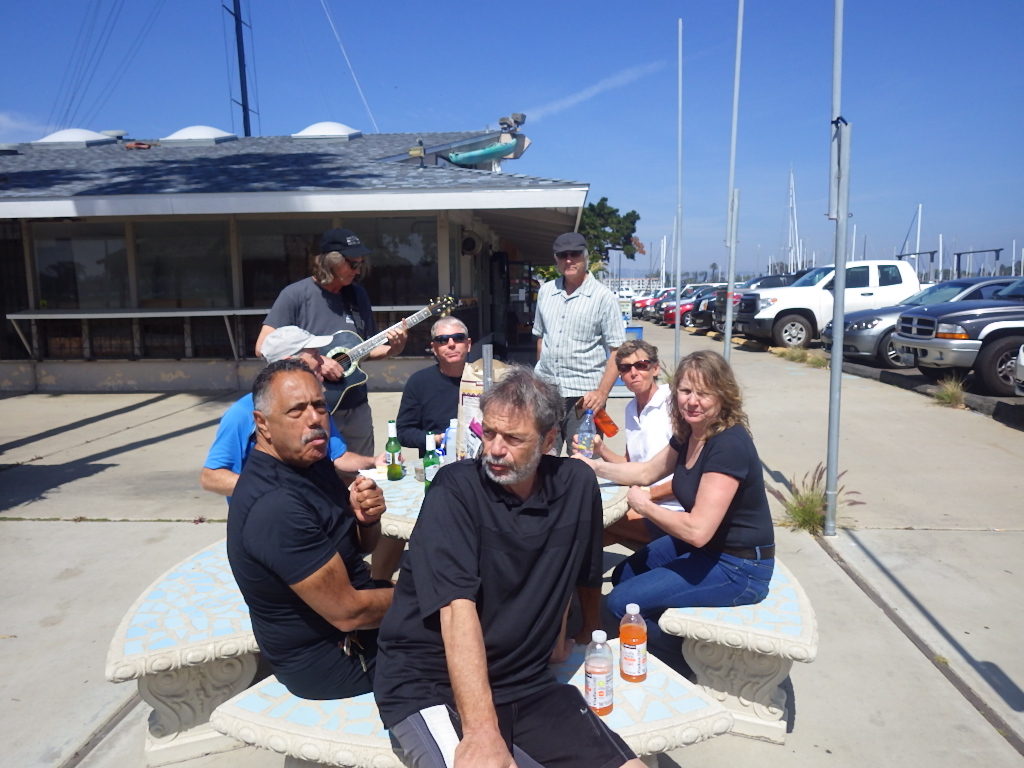-by Jay Murdock, SDKC Safety Editor
Thirteen people took part in the session led by Jen Kleck, designed to learn and practice skills in handling rough water and rescue techniques to quickly aid someone in a dangerous situation (close to rocks or in a surf zone). While the water conditions were too mild to experience and practice certain skills, we did practice bracing, but mostly rescue procedures. The following photos will show the sequence of what we practiced.
Below- Jen demonstrated the assisted re-entry using the leg hook (or heel hook) method. Emphasis was placed on keeping the swimmer in sight and having her hold on to her paddle. Jen’s paddle was kept across her lap, then placing the swimmer’s paddle there also just before re-entry. On still water, the swimmer’s body position while getting in the boat may be ok, but it is better to stay low on the aft deck for better stability.
Below- Jen went through the methods of getting someone who has exited their boat away from rocks or out of the surf zone. The quickest way to get a swimmer from danger is to have them swim to you. Have the person then hang on to your bow or stern handle while you paddle out of danger, then retrieve the boat later. A good way to get both the swimmer and boat to safety is to have them hold on to the bow and stern handles of your boat and theirs, and leg kick while you back paddle. The rescuer’s boat position should always be furthest from the rocks while performing this.
Below- Towing a person sitting in a boat can be divided into two categories, a quick, or short tow for rescue, and an in-line tow, which is not as urgent, and is for distance. We did not practice the in-line tow, which is done with a 30-50 foot line that is used for longer tows. We did practice a few methods of the quick tow for rescue purposes.
Quick Tow Methods:
Contact Tow– There are two methods of doing this. The easiest method is to simply have the person being rescued lean across your kayak foredeck and hang on to your deck lines while you do a forward or back paddle. The second method is to use a short line or leash and hook it to the other boat, performing a close tow. You can see Jen doing that in one of the photos below. More photos of these two procedures will be added at a later time to give more details, and this article will be then found in the skills group of articles.
Close Tow– This method involves a short line of 5-10 feet, and can be performed using your longer waist tow line, tied off for a short line, or a dedicated short line ready to employ and stored on your foredeck. If you use a line for towing, always have a knife ready for quick use in case you get tangled in the line. After studying this, I personally like the idea of having a dedicated line kept on your deck in front of you to use immediately for a quick tow rescue. By using a 5 foot line or webbing strap, with a carabiner at each end, the close-tow line is a contact tow line (because the two boats are making contact with each other). You can buy a manufactured non-stretch contact line, or make something yourself. If you make this yourself, be sure to file off the carabiner gate tooth so it will not snag the line, or better, buy a stainless steel carabiner that is “toothless”. Always hook the carabiner to the deck line from beneath that line, with the gate facing up. Store the line across your foredeck by hooking a carabiner to each side deck line, so you can employ it to the other boat on either side. Keep the excess line under a bungee line, or crisscross the line over the deck (the bungee storage deploys faster though).
Below- Jen demonstrated the cowboy re-entry method, and everyone practiced the assisted re-entry of clearing the boat of water and getting the swimmer back in. The morning was followed up with a fun time at the patio, and showing off the old and new club T-shirts. We will be having more of these skills practice sessions in the coming months, led by Jane Hardy. And next winter, if enough people are interested and Jen can instruct it, we will have another special session in rough sea conditions out in the channel. That will be done with a short notice, when we know the conditions are favorable and Jen is available.


